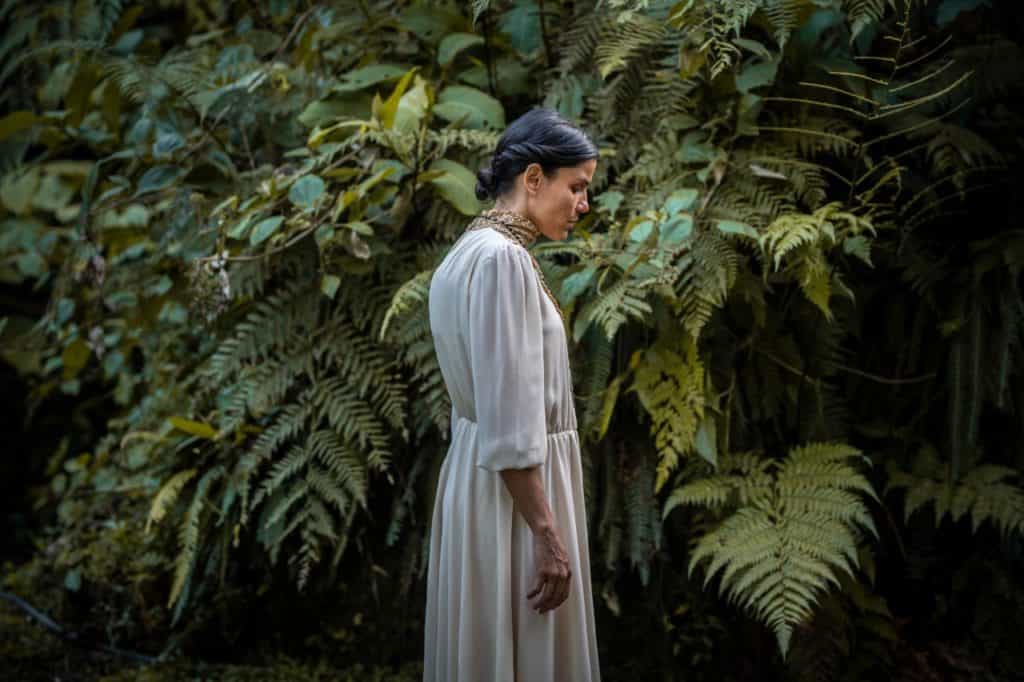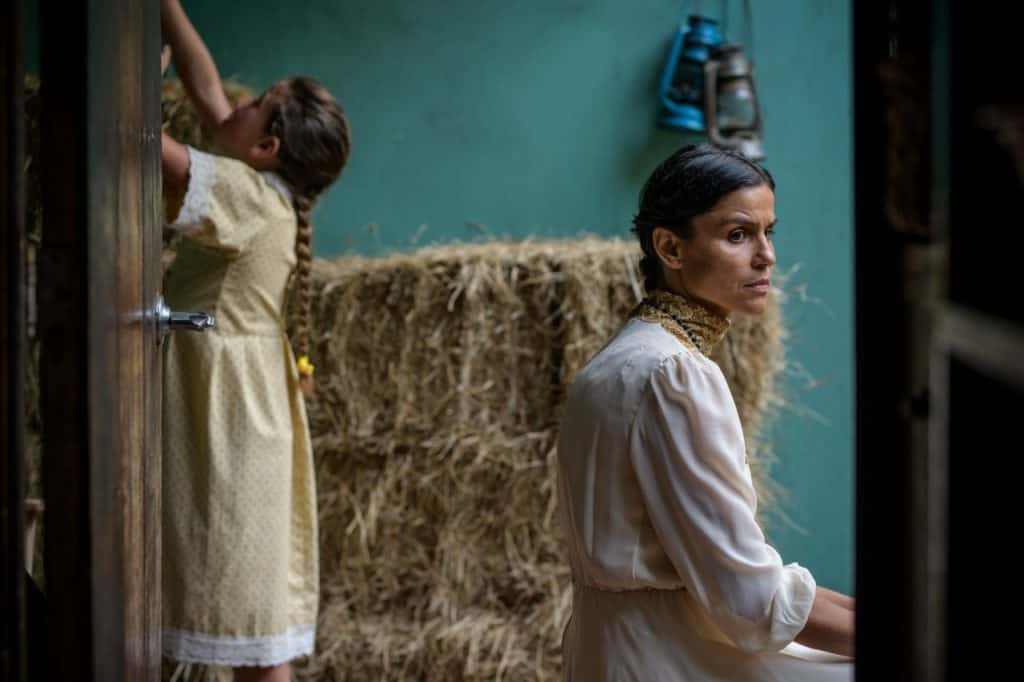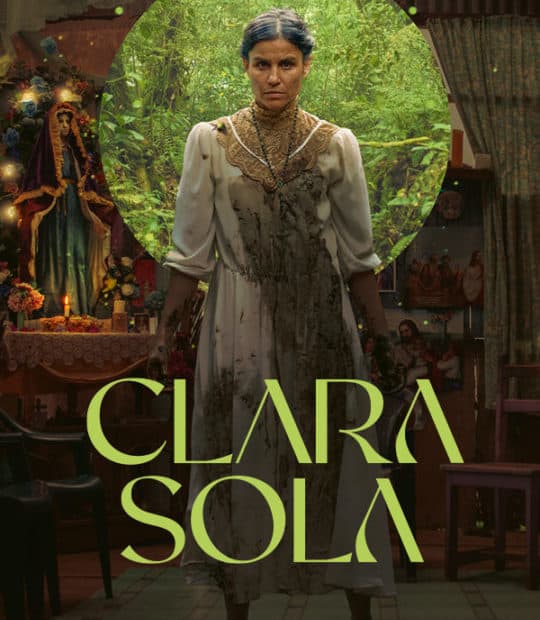Clara Sola is the debut feature of the Costa Rican-Swedish director Nathalie Álvarez Mesén. It was screened in the Quinzaine de Réalisateurs section of the Cannes Film Festival and is set in a remote region of Costa Rica. The titular character is a 40-year-old woman who is a virgin, as well. She lives with her deeply religious mother, Fresia, and her teenage niece María. The family also has a white horse that is one of their sources of income through the tourist industry. Clara seems to have a special bond with the horse called Yuca, and she is herself offered to people as a healer since she supposedly has a direct connection to the Blessed Virgin.
Clara has a curved spine which could be cured with surgery. However, Fresia refuses to do anything about it. “God gave her to me like this,” she tells the doctor. It’s obvious that she is in dire need of a new life. With the arrival of a new employee, Santiago, a possible change is on the horizon. All the women are drawn to the newcomer, but the first interaction between them is when Santago wants to take Yuca for a tourist run, and Clara says that “she doesn’t want to go.” Among the latter’s gifts is the ability to understand animals. Not in a Dr Doolittle way, but rather in a deeper sense which he dubs “knowing their secret names.

The writing of Clara Sola
Clara Sola was written by the director together with Colombian screenwriter Maria Camila Arias. Their script investigates toxic matriarchal rituals and paints a quietly devastating picture of the people trapped in society. Among the things Fresia does to Clara is to rub her fingers in chilli to avoid her touching herself. Things come to a head when it’s time to celebrate María’s 15th birthday with all the feminine traditions that come with it, including dances and a special dress. This celebration (called the quinceañera) will be the occasion where the world as they know it will unravel in some ways.
In a cast largely composed of amateurs, Wendy Chinchilla, as Clara, has to carry the film, and she delivers on all fronts. She is a trained dancer, but those abilities don’t aid her much in this part. She is an amazing presence with an almost feline quality, which is most obviously expressed in the latter part of the film. It’s a role that could easily fall into cliché, but she handles the challenge perfectly. Others are fine in their roles as well.

Sweden is the major production country of the film, and the major Swedish artistic contribution is the cinematographer Sophie Vinqvist- Loggins. After her work on Aniara, she displays her versatility here with a film shot on 35 mm. She makes the best of the luscious forests of the area and is equally adept with the interior scenes. There are several stunning images in the film that alone makes it worth seeing. After some celebrated shorts (among them The Swedish Boys), Nathalie Álvarez Mesén delivers a strong debut feature that shows great promise for the future. It is eligible for Swedish awards, and I would not be surprised if it picks up awards for best actress and cinematography.
